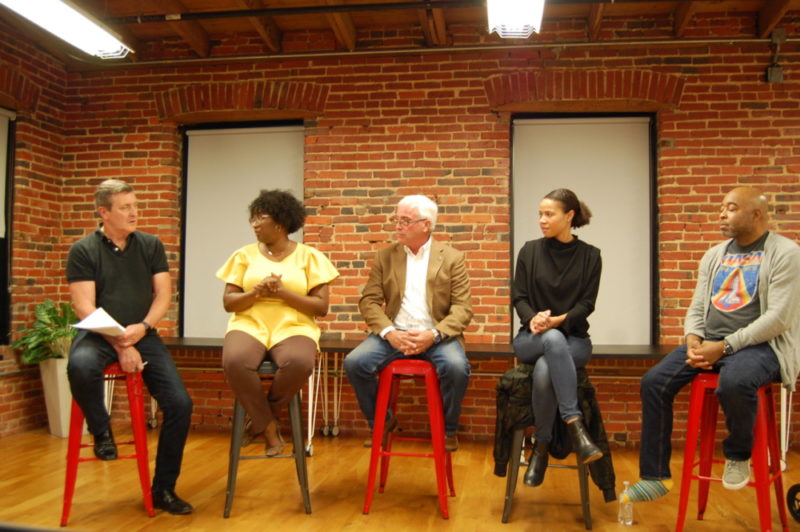Defined as the gap between individuals with and without access to modern communication and information technology, the digital divide makes it virtually impossible for people in underserved communities to fully participate in society.
A group of experts explored the way this divide plays out in Baltimore — where, like much of the surrounding state, around 40% of households lack high-speed internet — during an early November panel at ETC Baltimore. The panel was one of many constituent events during the statewide, month-long Maryland STEM Festival.
Increasingly, the featured panelists agreed, the digital divide prevents opportunity from reaching people who need it the most. Participants identified such contributing factors as the cost of devices, cultural acceptance, systemic racism and trust issues.
“We currently have neighborhoods in Baltimore that don’t even have the infrastructure to access this technology,” said Stephanie Alphee, who manages one of the Digital Harbor Foundation’s community programs to help young people develop digital literacy. The Digital Harbor Foundation is also chipping away at that disparity through Project Waves, leveraging the technology of mesh networks to install WiFi antennas on apartment buildings in low-income communities. But it’s a drop in the bucket.
“This program hires locally, the solution came locally, and we received ARPA funds to grow and support this work,” Alphee said. “Homegrown solutions are happening, but how do we foster that to keep it going?”
A hyperlocal workforce
Laptop distribution to students during the pandemic helped, and building out infrastructure can also be crucially beneficial. But Ed Mullin, executive director of the Baltimore Robotics Center and chair of the Baltimore Regional Tech Council, said those measures only go so far.
“You have to think about sustainability, maintenance, support, service and upkeep,” he said. “You don’t just set up antennas and walk away, you have to have a plan for the long haul.”
That’s where efforts to train a hyperlocal workforce could have a huge impact on marginalized communities, said Rowdy Orb.it CEO Jonathan Moore.
“We have a lot of individuals living here who are insanely smart but went a different direction because of the economics of their community,” Moore said. “I think you can repurpose a lot of that mindset.”
From a vo-tech perspective, Mullin suggested that the business community could do a better job of helping Baltimore’s schools implement the necessary pipelines.
“Maybe it takes donating some equipment and sending [mentors], but schools don’t know what students need to be taught or the certifications they need,” he said.
Building an inclusive future
Solutions to the digital divide won’t happen overnight, even with state and federal funding pledged to address this issue. Acceptance isn’t a given, noted Crown Castle Public Affairs Manager Ashley Greenspan.
“Trust in government is at an all-time low,” said Greenspan, whose employer has partnered with Digital Harbor to install and support free outdoor Wifi hotspots at select Enoch Pratt Free Library branch buildings. “We have to think about how to design and roll out programs in partnership with trusted community partners to make sure those programs are successful.”
“I think it will take a public-private partnership and organizations with the wherewithal and expertise to maintain these networks,” Greenspan added. “It’s just a matter of having the right assets to make it work.”
Whatever happens, Alphee said the city’s youth need to be involved in the conversation because schooling and access to education is a big part of why the digital divide is even making headlines. Thinking more broadly, she said technology is already reframing formal education and needs to be a part of curricula.
“It’s now about building basic 21st-century skills and preparing students for the 2050 and 2060 workforce they’re going to be in,” Alphee said. “There’s not going to be a career field that exists that doesn’t touch technology in some way.”
Watch the full panel below:
Join our growing Slack community
Join 5,000 tech professionals and entrepreneurs in our community Slack today!
Donate to the Journalism Fund
Your support powers our independent journalism. Unlike most business-media outlets, we don’t have a paywall. Instead, we count on your personal and organizational contributions.

Maryland firms score $5M to manufacture everything from soup to nanofiber

National AI safety group and CHIPS for America at risk with latest Trump administration firings

How women can succeed in male-dominated trades like robotics, according to one worker who’s done it


